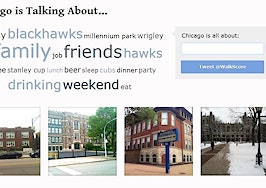Mapping data firm Maponics LLC is now offering a tool that rates the walkability of neighborhoods, school attendance boundary zones, subdivisions, ZIP codes and other geographical areas defined by the company.
The new feature adds to the firm’s Maponics Context suite of data — including detailed demographics info, crime info and school rankings — around the geographic units Maponics defines using “intelligent polygons.”
“It’s one thing to have points of interest in an area — for recreation, for culture, for shopping and dining — but another thing altogether to understand how accessible they are,” said Darrin Clement, Maponics founder and CEO, in a statement. “Walkability gives a geospatial meaning to the concept of ‘street smarts.’ ”
“We have over 150,000 neighborhoods that we generate the walkability rating for,” Clement told Inman News.
Vermont-based Maponics generates walkability ratings on a five-point scale using a complex algorithm the company developed. The algorithm takes into account information like the concentration of homes in an area, number of local amenities, and the numbers and types of streets and intersections, said Michael Moshay, Maponics’ vice president of contextual analytics, in a demo he gave Inman News.
The new walkability rating data can be broken out from the Maponics Context suite, or bundled together with the firm’s other boundary-data products. To license just the walkability data, he said, would cost smaller companies in the range of thousands per year and larger companies in the tens of thousands per year.
Maponics is releasing more from its new transportation data suite in the coming months, including analytics that gauge how easy it is to bike, drive and take public transportation from one of the geographic units it works with.
Currently, companies like Zillow, Trulia, realtor.com and Century 21 Real Estate license Maponics boundary data.
Seattle-based Walk Score also provides transportion-related ratings, including “walk scores,” bikeability heat maps, and contextual information about neighborhoods and cities. Walk Score recently launched a new feature that allows users to gauge the range of choice in amenities they have in an area.







